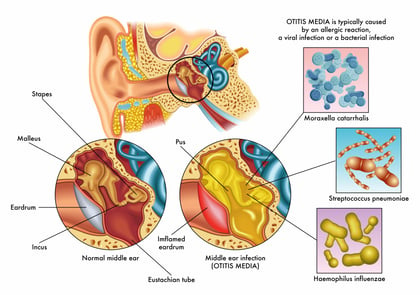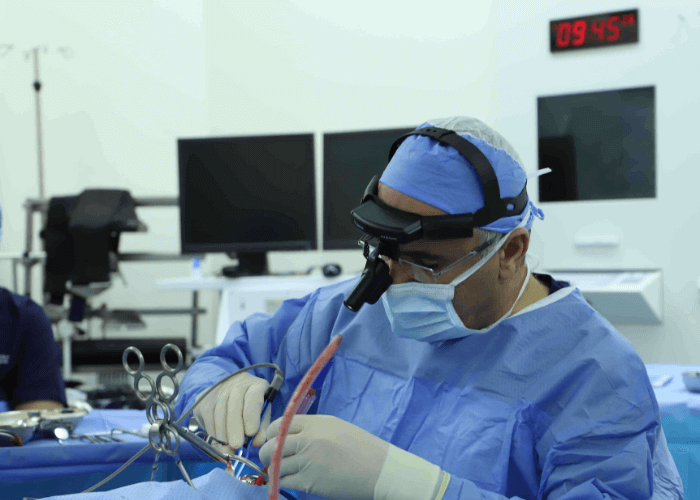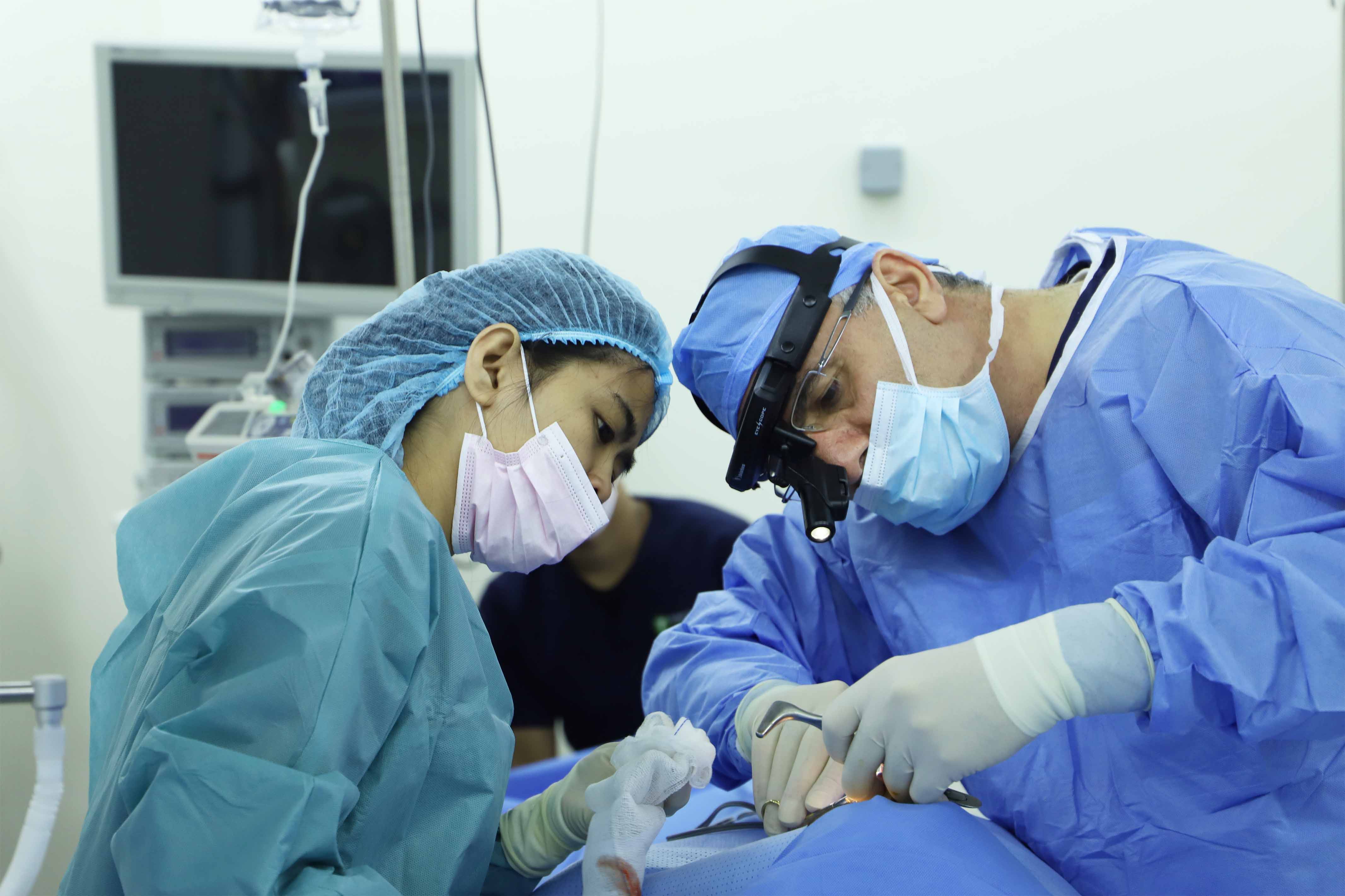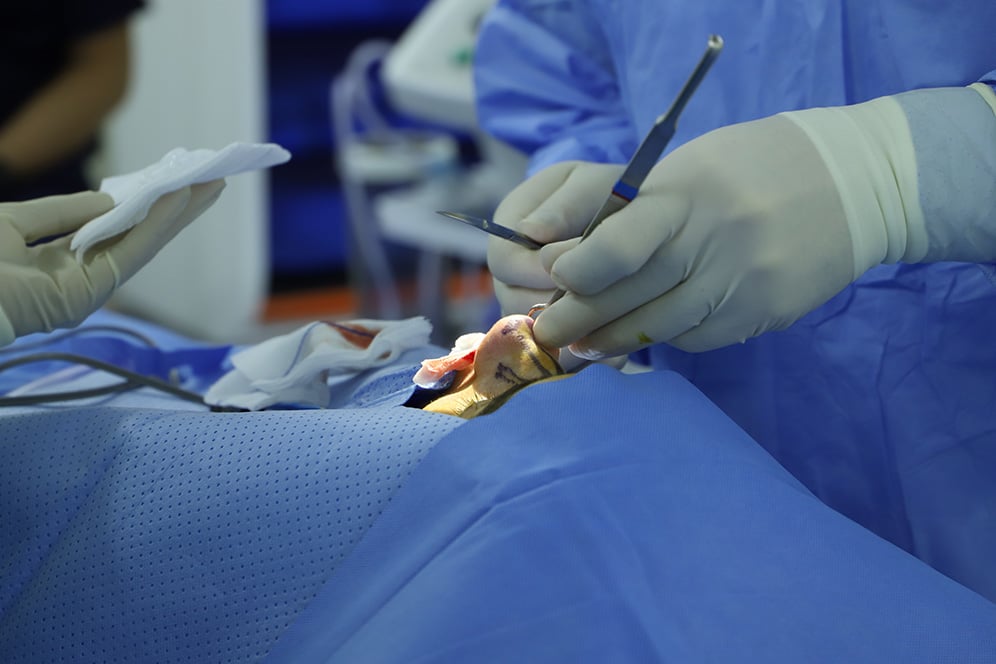Otitis Media with Effusion (OME) - Dubai ENT Clinic
What is OME?
OME is a collection of non-infected fluid in the middle ear space. It is also called serous or Secretory Otitis Media (SOM).
Causes
OME is usually a result of poor function of the eustachian tube, the canal that links the middle ear with the throat area. The eustachian tube helps to equalize the pressure between the air around you and the middle ear.
Some reasons the Eustachian tube may not work properly include:
- An immature Eustachian tube, which is common in young children
- Inflammation of the Adenoids
- A cold or allergy, which can lead to swelling and congestion of the lining of the nose, throat, and Eustachian tube (this swelling prevents the normal flow of air and fluids)
- A malformation of the Eustachian tube
While any child may develop OME, the following are some of the factors that may increase your child's risk of developing OME:
- Having a cold
- Spending time in a daycare setting
- Being bottle-fed while lying on the back
- Being around someone who smokes
- Absence of breastfeeding
- History of ear infections
- Craniofacial abnormalities (e.g. cleft palate)
Signs and symptoms
Common symptoms include:
Testing and diagnosis
If you suspect your child may have OME, you should schedule an appointment with your otolaryngologist.
- The physician will review the child's medical history and complete a physical examination of your child including inspecting the outer ear(s) and eardrum(s) using an otoscope. The otoscope is a lighted instrument that allows the physician to see inside the ear. A pneumatic otoscope blows a puff of air into the ear to test eardrum movement.
- In addition, a hearing test may be ordered. The hearing levels and the findings on tympanometry may help to diagnose OME.
Treatments
Treatment for OME depends on many factors and is tailored for each child.
- In most cases the fluid in OME resolves on its own within 4 to 6 weeks, so acute treatment is not needed.
- In most cases, the middle ear fluid in OME is not infected so antibiotics are not indicated. However, if your child has an upper respiratory infection accompanying the OME, antibiotics may be indicated.
- Antihistamines, mucolytic, and decongestants have been shown to have no effect on OME.
Myringotomy and Ventilation Tubes
If your child has OME that persists more than 3 months or hearing associated with the fluid may be affecting speech development or school performance, your child’s physician may suggest ear tubes (Myringotomy tubes) to be placed in the ear(s) through a surgical procedure called Myringotomy.
This surgical procedure involves making a small opening in the eardrum to drain the fluid and relieve the pressure from the middle ear. A small tube is placed in the opening of the eardrum to allow air to enter (ventilate) the middle ear and to prevent fluid from accumulating. The child's hearing is restored after the fluid is drained. The tubes usually fall out on their own after six to twelve months.
Surgical removal of Adenoids
If your child's Adenoids are infected, your child's physician may recommend the removal of the Adenoids (lymph tissue located in the space above the soft roof of the mouth, also called the nasopharynx). Removal of the adenoids has been shown to help some children with OME.
Outcomes
Most children with OME will recover quickly and have no long-term effects of the disorder. If your child had ear tubes inserted or surgery for removal of her Adenoids, she will need ongoing monitoring to ensure proper recovery.
Click here for ENT surgical packages
Dubai ENT clinic - If you are in search of ENT specialist in dubai, then we can provide experienced and the leading ENT doctor in dubai for healthy treatment.




.jpg?width=1080&height=1080&name=DR%20HATEM%20(1).jpg)



